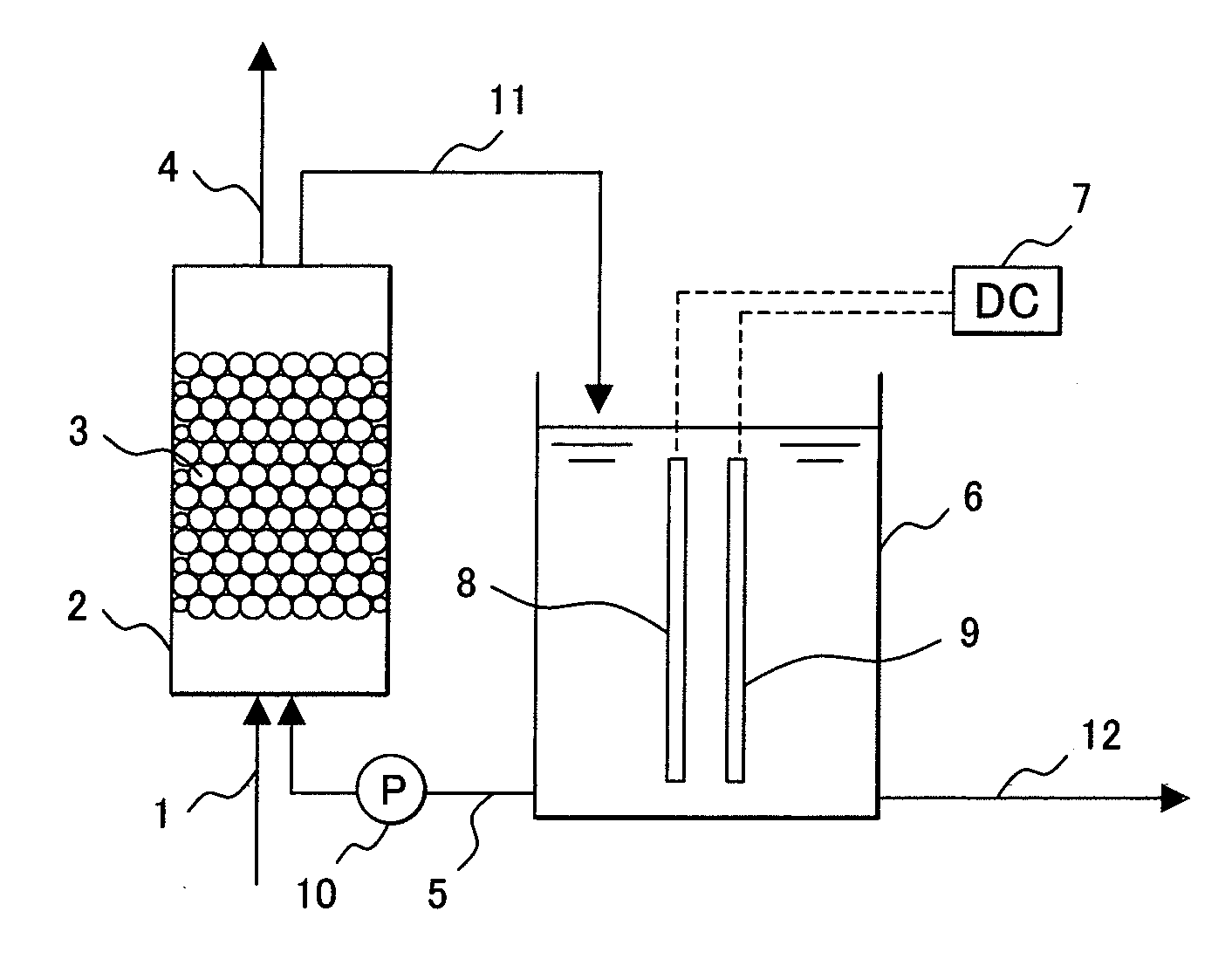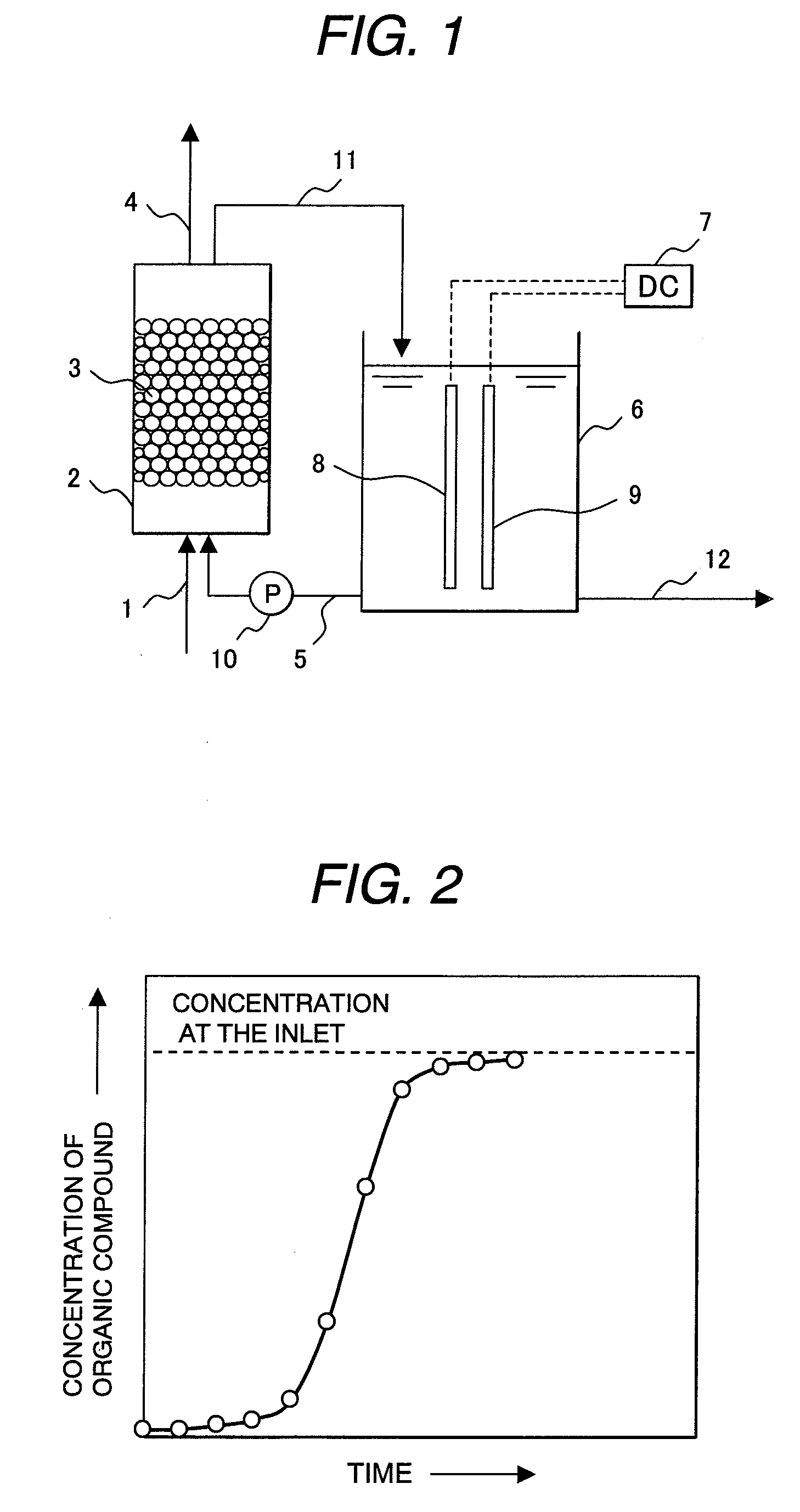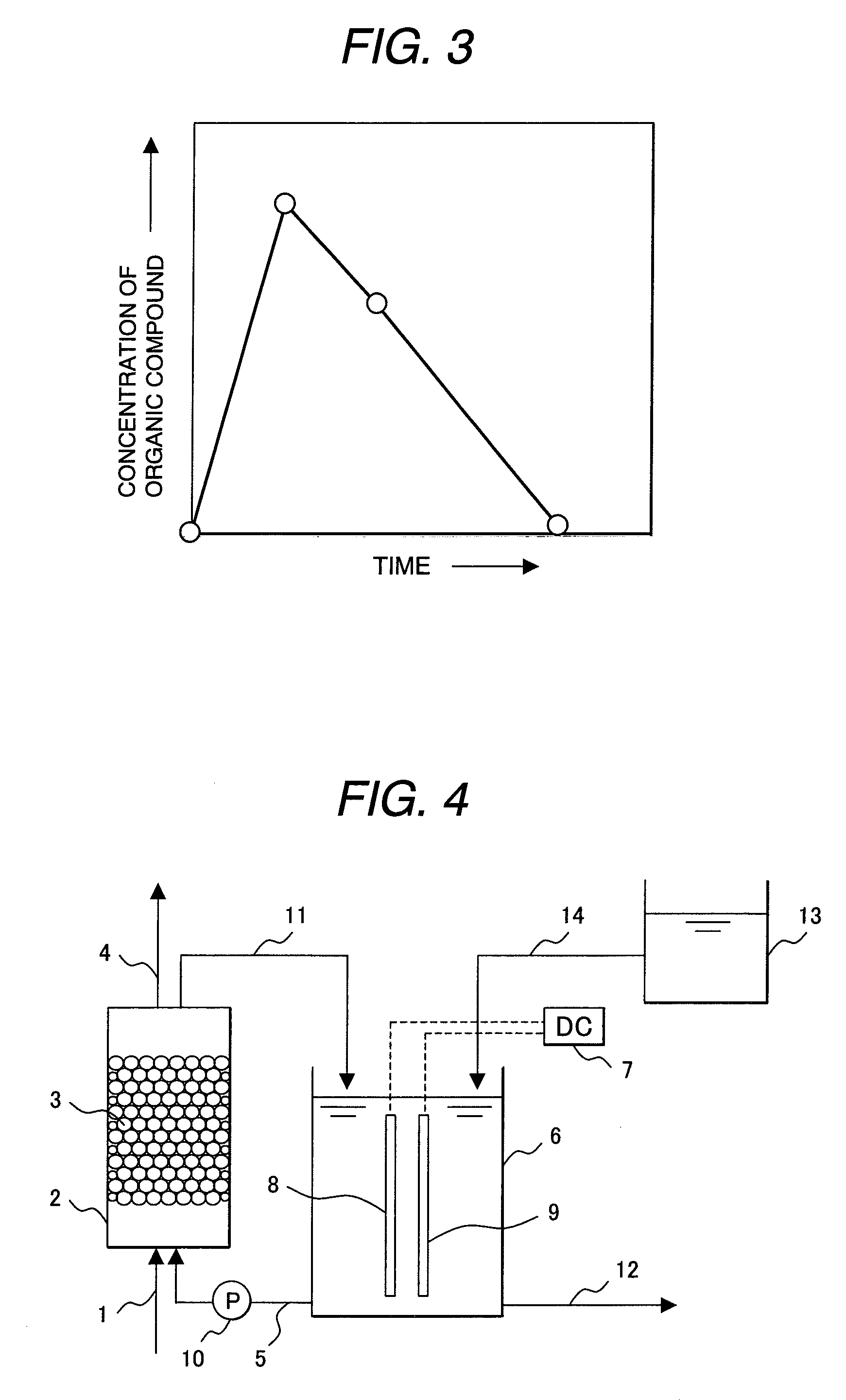Treatment method of organic compounds included in waste water, a treatment apparatus of organic compounds included in waste water, a treatment system of organic compounds included in waste water, and a bitumen collecting system
a technology of organic compounds and treatment methods, applied in the field of organic compounds included in waste water, can solve the problems of large equipment requirements, activated carbon, and process takes time, and achieve the effect of separating in a short tim
- Summary
- Abstract
- Description
- Claims
- Application Information
AI Technical Summary
Benefits of technology
Problems solved by technology
Method used
Image
Examples
first embodiment
[0056]Next, a treatment apparatus of organic compounds included in waste water according to a first embodiment of the above mentioned present invention will be described. The treatment apparatus of organic compounds, shown in FIG. 1, in the first embodiment provides a supply pipe 1 for supplying the waste water including the organic compounds, an adsorber 2 which is filled with an adsorbent 3 such as activated carbon, a waste water discharging pipe 4, an electrolyzer 6 in which an electrolyte is supplied and a cathode 8 and an anode 9 are provided in the electrolyte, and a DC power supply 7 connected to the cathode 8 and anode 9.
[0057]An electrolyte supplying pipe 5 supplies the electrolyte from the electrolyzer 6 to the adsorber 2. A pump 10 is connected to the electrolyte supplying pipe 5. An electrolyte returning pipe 11 returns the electrolyte from the adsorber 2 to the electrolyzer 6. A drain pipe 12 is provided to use an alkaline solution in the electrolyzer 6. A piping system...
second embodiment
[0076]FIG. 4 shows a treatment apparatus of organic compounds included in waste water in a second embodiment of the present invention. In the second embodiment in FIG. 4, the same reference numerals as in the structure of the treatment apparatus of organic compounds, shown in FIG. 1, in the first embodiment indicate identical components, so their detailed explanation will be omitted.
[0077]In the second embodiment, a chemicals vessel 13 with a volume of, for example, 50 ml was added to the treatment apparatus of organic compounds, shown in FIG. 1, in first the embodiment of the present invention, so that a chemical agent consumed in the electrolyzer 6 can be replenished.
third embodiment
[0078]FIG. 5 illustrates how test was carried out using a treatment apparatus of organic compounds included in waste water in a third embodiment of the present invention. Potassium chloride (KCl) was used, instead of sodium chloride, as the chemical agent in the chemicals vessel 13 in the second embodiment. A 20 wt % KCl solution was supplied in the chemicals vessel 13.
[0079]The electrolyzer 6 was supplied only with water. The potassium chloride was supplied from the chemicals vessel 13 to the electrolyzer 6 before electrolysis so that its concentration became 1.0 wt %. The resulting solution was stirred with a stirrer (not shown) so that it became uniform, after which a current was supplied between the anode 9 and cathode 8. As a result, it was confirmed that the adsorbed acetic acid was removed, oxidized, and decomposed.
[0080]When components of the treatment apparatus of organic compounds, shown in FIG. 5, in the third embodiment, have the same reference numerals as in the structu...
PUM
| Property | Measurement | Unit |
|---|---|---|
| Concentration | aaaaa | aaaaa |
Abstract
Description
Claims
Application Information
 Login to View More
Login to View More - R&D
- Intellectual Property
- Life Sciences
- Materials
- Tech Scout
- Unparalleled Data Quality
- Higher Quality Content
- 60% Fewer Hallucinations
Browse by: Latest US Patents, China's latest patents, Technical Efficacy Thesaurus, Application Domain, Technology Topic, Popular Technical Reports.
© 2025 PatSnap. All rights reserved.Legal|Privacy policy|Modern Slavery Act Transparency Statement|Sitemap|About US| Contact US: help@patsnap.com



